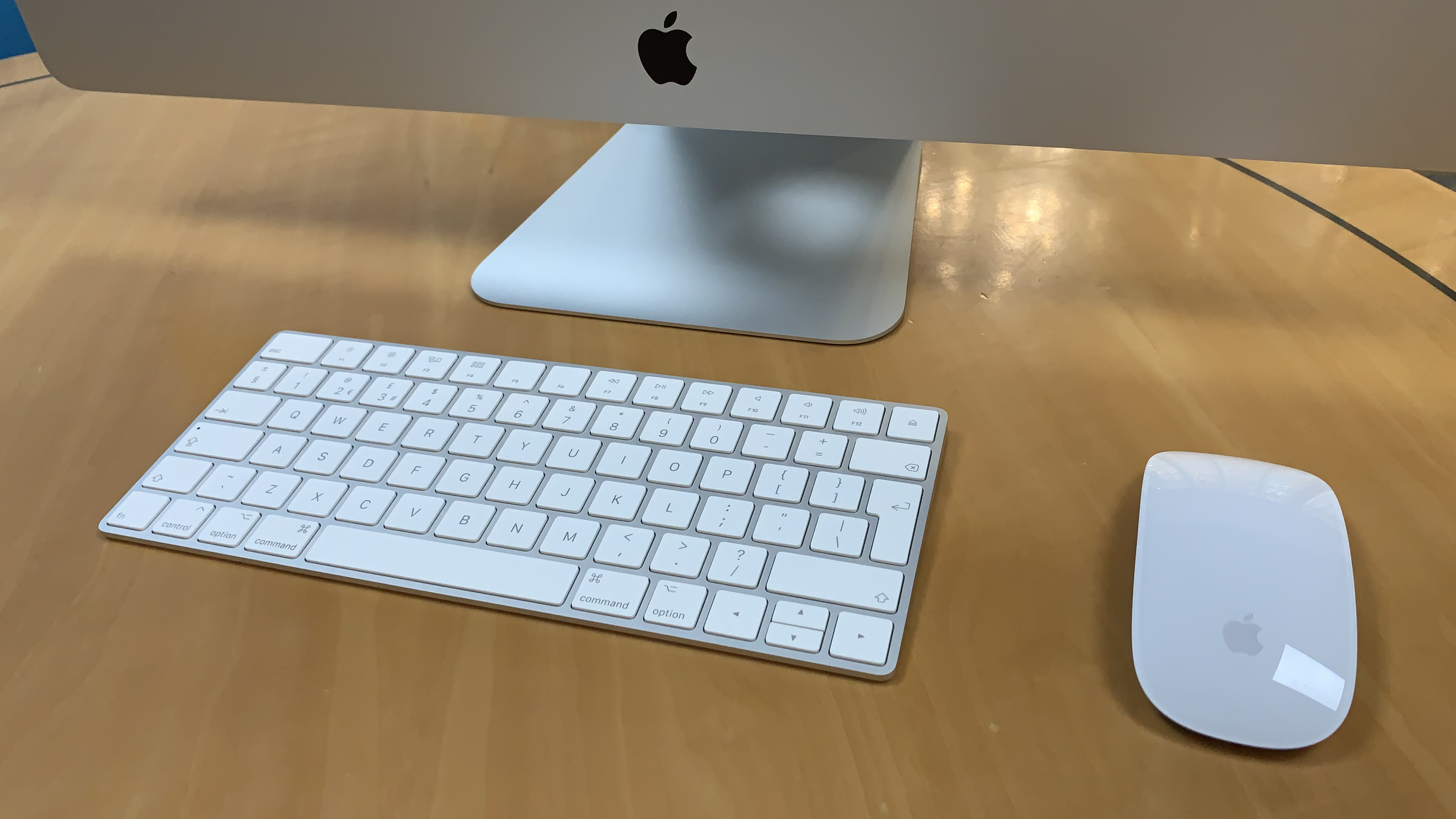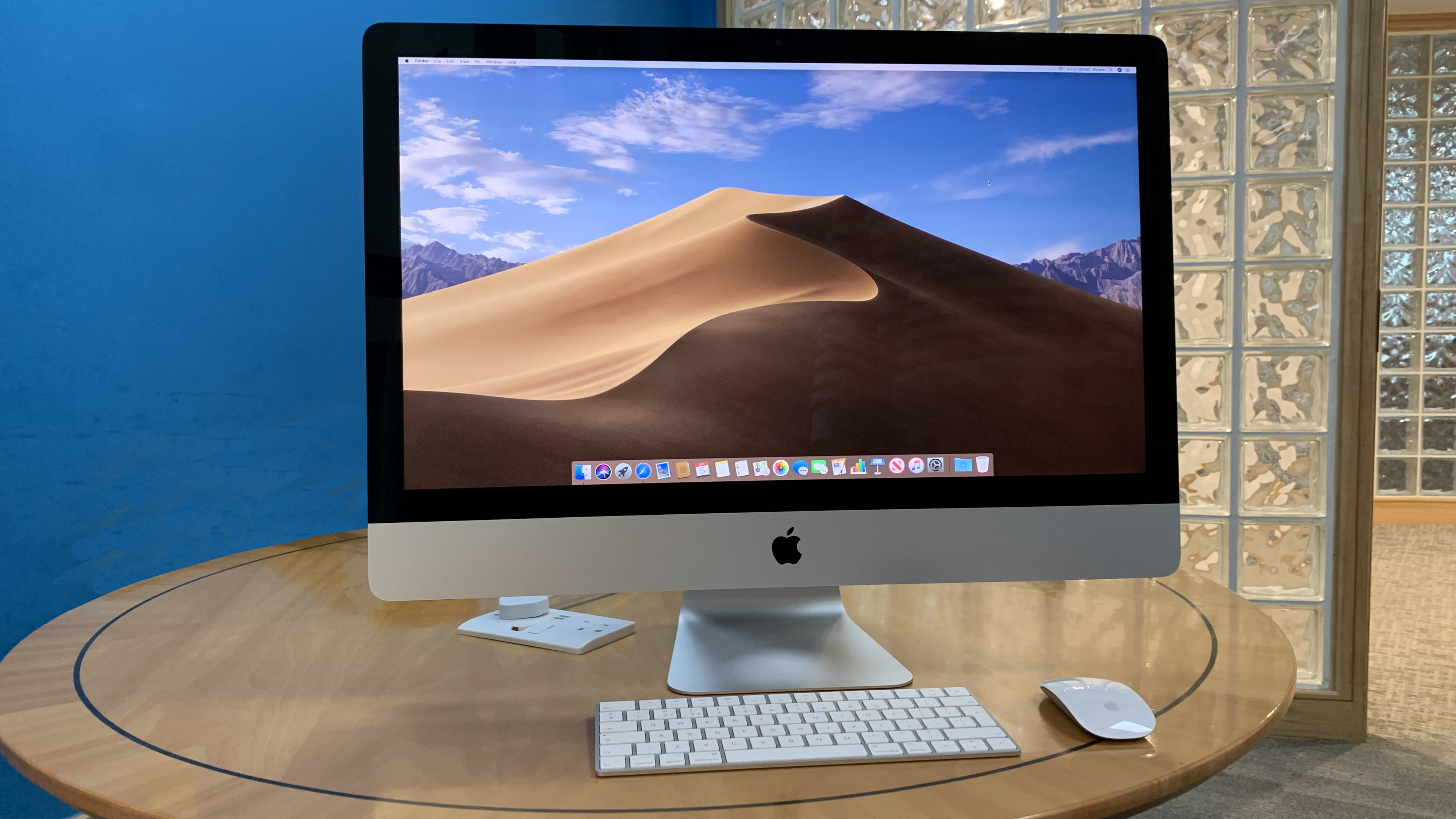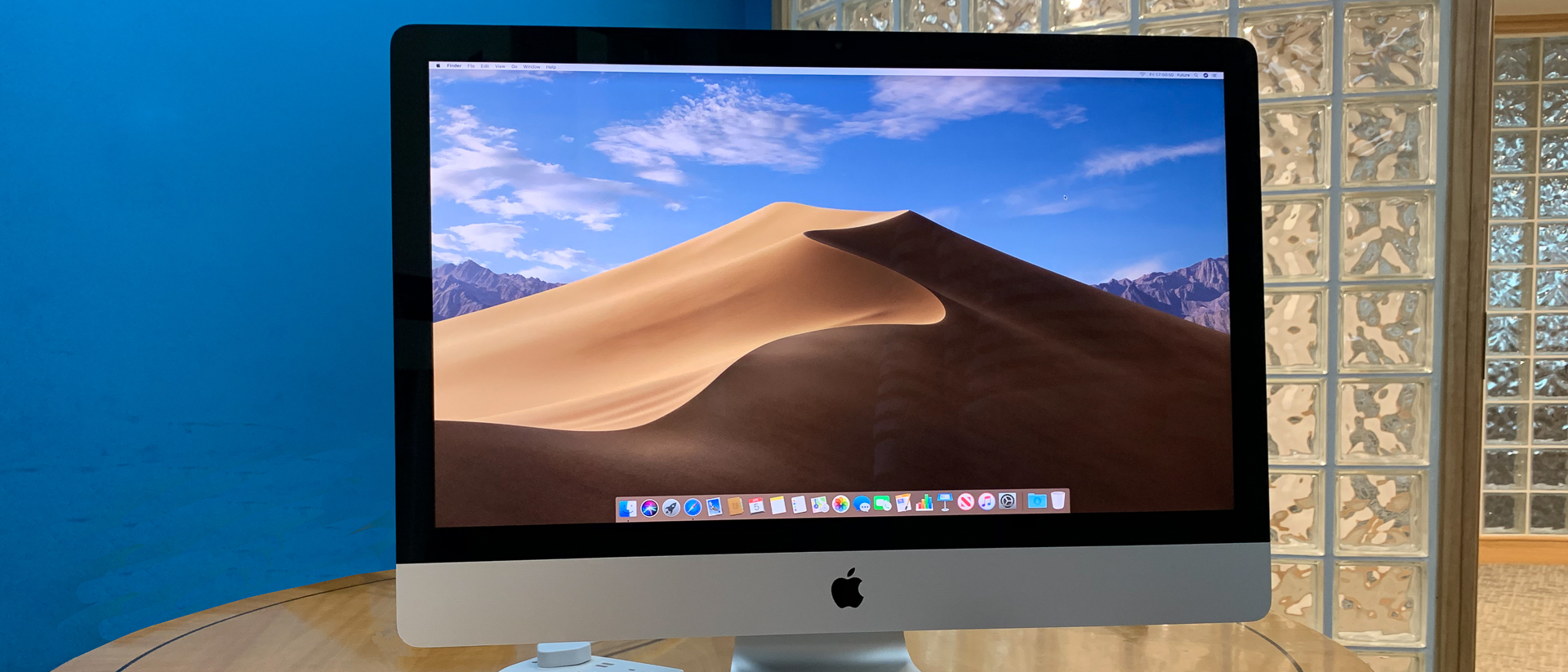TechRadar Verdict
The 27-inch Apple iMac 2019’s 5K display remains a stunning standout feature, and if you need top-notch performance, the high-end CPU and GPU options are welcome extras. We only wish every buyer got to enjoy a responsive iMac with an SSD.
Pros
- +
Stunning 5K display with wide color gamut
- +
Vega 48 outperforms even high-end eGPUs
- +
Remains quiet with heavy workload
Cons
- -
Costly ample SSD storage
- -
8GB RAM to start throughout models
- -
Mouse remains annoying to charge
Why you can trust TechRadar
The Apple iMac 27-inch 2019 is a powerful entry in the popular all-in-one computer line, even after all these years, complete with high-end configurations for those who need to upgrade their existing machine. With a 9th-generation Intel Coffee Lake Refresh processor, up to an AMD Radeon Pro Vega 48 graphics, and a super-fast 512GB SSD, the Apple iMac 27-inch 2019 is a highly-capable machine even by 2021 standards.
Apple is getting sued for not including dust filters in iMac and MacBooks
Apple blames Intel’s processor shortage for slump in Mac sales
Sadly, when it comes to the design, not much has changed here. The Apple iMac 27-inch 2019 still comes in the same tapered chassis as the 2017 model – the same design Apple has been using since late 2012. In fact, short of turning these two models on and taking each for a spin, you probably wouldn’t be able to tell the difference. So, if you’ve been holding out on a design overhaul or upgrade, you might be disappointed.
However, if what you need is an upgrade on specs, especially to replace an aging machine at home, the Apple iMac 27-inch 2019 is worth checking out.
Here is the 27-inch Apple iMac configuration sent to TechRadar for review
CPU: 3.6GHz Intel Core i9-9900K (eight-core, 16MB cache, up to 5.0GHz with Turbo Boost)
Graphics: AMD Radeon Pro Vega 48 (8GB VRAM)
RAM: 16GB DDR4 (2,666MHz)
Screen: 27-inch 5K (5,120 x 2,880) Retina display (P3 wide color)
Storage: 512GB SSD
Ports: 4x USB 3 (Type-A), 2x Thunderbolt 3 (Type-C), SDXC card slot, 3.5mm headphone jack, Gigabit Ethernet, Kensington lock slot
Connectivity: 802.11ac Wi-Fi, Bluetooth 4.2
Operating system: macOS 10.14.4 Mojave
Camera: FaceTime HD
Weight: 20.8 pounds (9.42kg)
Size: 25.6 x 8 x 20.3 inches (65 x 20.3 x 51.6cm; W x D x H)
Price and availability
Let’s ignore our revved-up review model’s specs for a moment, which send the price north of three grand, and first talk about what you get in the three more affordable, off-the-shelf 27-inch iMac 2019 starting points.
Each of the entry-level ($1,799/£1,749/AU$2,799) and the mid-range ($1,999/£1,949/AU$3,099) models comes with an eighth-generation, six-core Intel Core i5 processor. The rival Dell Inspiron 27 7000 range also uses eighth-gen CPUs, although the nearest price ($1,688.99/£1618.99/AU$2,999) to Apple’s most affordable 27-inch iMac is also equipped with a six-core processor, it has a lower clock speed of 2.4GHz, whereas the iMac’s is 3.0GHz.
At the top of the 27-inch iMac 2019 line-up is a model that includes a ninth-gen, six-core i5 as standard. That’ll set you back $2,299/£2,249/AU$3,549, which is actually the most affordable way to get a ninth-gen CPU in an iMac.
It’s not the only way, but the other – adding the more powerful eight-core i9 that was in our review unit – adds $500/£450/AU$770 to the mid-range spec or $400/£360/AU$640 to the highest standard config. Before you balk at that, read about its impact in our HandBrake test, as it might be the way to go if you expect your all-in-one to do heavy lifting often.
Sign up for breaking news, reviews, opinion, top tech deals, and more.
If you have money and need a lot more power, consider the iMac Pro, which comes it at $4,999 (£4,899, AU$7,299) for 27-inch 5K Retina display, an 8-core Intel Xeon W processor, AMD Radeon Vega 56 (8GB) graphics, 32GB of error-correcting code (ECC) memory and a 1TB SSD.
Design
Again, Apple has been using this look for the iMac for more than six years now. Make of that what you will, but that also means there’s not much to complain about.
Although, if we were to complain about something, it would probably be the one that’s obnoxiously in our faces: the display’s thick black bezel and the aluminum chin below look increasingly dated.
Considering that Apple has trimmed some of that fat from all of its MacBooks, on which doing so must have been more of a challenge, it’s definitely disappointing that Apple doesn’t seem to be in a hurry to do the same for its all-in-one desktop.
Changing the overall good look isn’t urgent, however. This particular iteration has aged gracefully, and continues to be elegant where the thicker models from 2011 and earlier didn’t. That is, when you see it from any angle other than head-on. The back’s gentle curve helps even a computer this big to look low-key in its surroundings.
We’re pleased with the iMac 2019’s heat management as well, even when putting the high-end components in our review unit through a tough test. Our HEVC video conversion in HandBrake comes close to maxing out all 16 virtual processing cores.
Despite that, the iMac 2019’s fan was quiet enough not to be distracting, even while producing a good amount of heat out of the rear vent.
Mousing around
You get a wireless mouse and keyboard with the iMac 2019. We wish Apple would allow customers to opt out of getting them to save money; you may simply not get on with the mouse’s shape and lack of key travel.
Though Apple sells the Mac mini that way, that initiative dates back to the aughts, when it wanted Windows defectors to keep using their existing mouse and keyboard. It was an implicit acknowledgement that you were probably happy enough with those accessories.

Apple’s Magic Mouse 2 continues to raise eyebrows over its Lightning charging port being on the bottom, which prevents simultaneous charging and use.
Some people don’t get on with that mouse, either due to its low profile or because they accidentally trigger features, thanks to the touch-sensitive surface. The ability to turn off gestures helps with the latter issue, and you can tell the right side to act as a right click, rather than having to hold the Ctrl key.
One option is to swap the mouse for a Magic Trackpad 2 ($50/£50/AU$60 at checkout). You might find it easier not to trigger gestures when the device used to move the pointer doesn’t slip around under your fingers.
The laptop-size Magic Keyboard can also be exchanged for a version with a numeric keypad that is also wireless ($30/£30/AU$30 at checkout). However, key travel on Apple’s keyboards is generally low, which you may find uncomfortable enough to warrant getting a third-party alternative.

Picture this
If 8GB of RAM by default on the 27-inch iMac 2019 seems stingy, look at rivals’ specs in full to see where else they might have compromised. With the Inspiron 7000, you only have to look as far as the display.
Though also 27 inches diagonally, it only has a 4K UHD (3,840 x 2,160) panel. That’s slightly lower resolution than even the 21.5-inch iMac’s truly 4K, 4,096 x 2,304 screen. That means bigger pixels and a less-sharp image than the iMac 2019 delivers.
There’s nothing to worry about with the entry-level, 27-inch iMac 2019’s display like there is on the iMac 21.5-inch models, where Apple still uses a plain HD panel on the cheapest model. Every 27-inch iMac 2019 display supports a wide (P3) color gamut.
Whichever 27-inch configuration you buy, you get a brilliant screen that delivers beautifully when highlighting extra details in photo editing – provided you have a similarly capable camera.
Even if tasks like photo editing aren’t a factor, you’ll benefit from macOS Mojave looking super-sharp on displays with a high pixel density. It has done so for years, so throughout the operating system, Apple’s apps and many third-party offerings, the iMac 2019’s display is a pleasure to look at.
First reviewed April 2019
- Images Credit: TechRadar
- You could save money on your purchase with our Apple promo codes.
- 1
- 2
Current page: Introduction, price, design and display
Next Page Performance, features and verdict